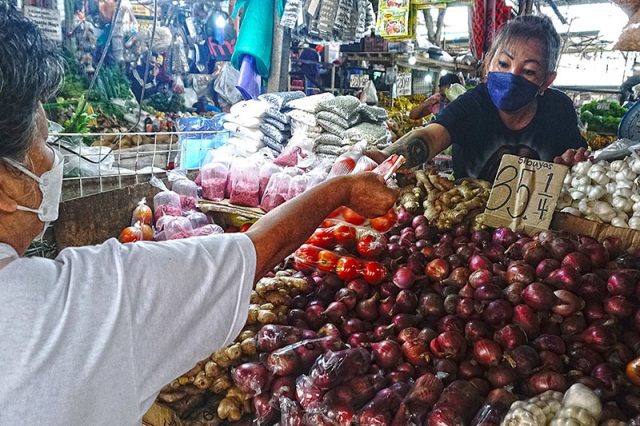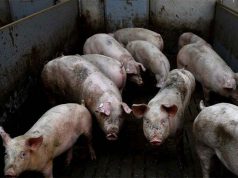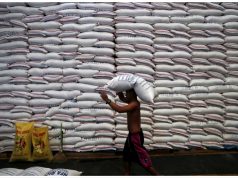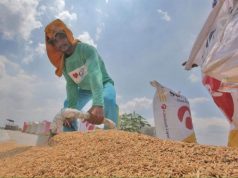
“Filipinos should stop romanticizing poverty and settling for unhealthy foods.”
This was what several social media users discussed after a Twitter user shared a post about supposed tips to save money amid price hikes of basic commodities.
The user was telling local Twitter what the public can eat without using onions, which were last week reported as the “most expensive globally.”
The tweet was accompanied by a photo of two plates—one filled with rice and the other with eggs, fish and meat.
“Dami pwedeng maulam sa murang halaga basta di ka mapili sa pagkain. Pwede mag ulam ng walang sibuyas. Ito suka at bawang lang katerno,” the user said.
“Wag magpanggap at magpilit iangat estado ng buhay. Kung ano kaya yun lang. Importante may makain ka, ke ano pa yan biyaya pa din matatawag,” she added.
This tweet was referencing the recently reported surge in the price of a kilo of red onions.
The Department of Agriculture monitored that a kilo of red onions costs around P280 to P300.
This was way higher than the global average price of the root crop at $1.51 (P85.14), according to the Global Product Prices list.
READ: ‘Most expensive globally’: Filipinos cry over onion price at P300 per kilo
Calls to stop romanticizing resiliency, settling for less
The tweet in question soon gained traction on Twitter and Facebook.
Several Filipinos called it out as another case of romanticizing Filipino resiliency and poverty.
“This self-limiting attitude is confused with resilience. The old saying, kapag maiksi kumot matutong mamalungtot. I hated it growing up coz you were given many ways to make that blanket longer and thicker,” one Twitter user said.
“Do we not deserve a better life after all the hardships we have done? Also please read the book mare. Lahat ng commodities ng isang simpleng Pilipino nagtaas ng presyo di lang sibuyas,” another user tweeted.
Marketing surveillance analyst John Paul Tanyag sees the tweet as a form of “gaslighting.”
“No wonder gaslighting is the word of the year,” Tanyag said through his handle @dumidyeypee.
Merriam-Webster named “gaslighting” its Word of the Year for 2022.
The word means “the act or practice of grossly misleading someone, especially for one’s own advantage.”
READ: ‘Overused?’: Pinoys share observations as Merriam-Webster tags ‘gaslighting’ word of 2022
Some Twitter pundits also criticized the user’s implication that Filipinos do not deserve to have better lives.
“Iisa lang talaga ang mensahe ng mga trolls: Di deserve ng Pilipino ang ginhawa. Parang prayleng Espanyol lang noon na nagsasabi na likas na tamad ang Pilipino. Sagot ni Rizal: bakit kikilos ang Pilipino kung tinanggalan siya ng dangal bilang tao,” historian Kristoffer Pasion said.
“Imagine going from ‘babangon muli’ to ‘wag magpanggap at magpilit iangat estado ng buhay’. Even these guys can’t deny na walang umaasenso ngayon lol,” internist Jai Cabajar said.
Science research specialist Ivan Roblas with the handle @pinoyscicommer, meanwhile, tweeted about the food that the Twitter user posted as an example of supposed frugal living.
“Alam nyo ba na sa pag-aaral ng DOST FNRI, dapat ay 1/6 lamang ang Grow foods o pagkaing mayaman sa protina,” Roblas wrote.
He also attached a link to the Pinggang Pinoy food guide.
This guide was developed by the Department of Science and Technology-Food and Nutrition Research Institute (DOST-FNRI).
According to this guide, a healthy plate comprises the following:
- Glow foods – fruits and vegetables that form half of the plate
- Grow foods – meat, eggs, poultry, fish, beans and legumes that form one-sixth of the plate
- Go foods – Rice, corn, bread, oatmeal, bread and root crops that fill one-third of the plate
Price hikes, shortages
Since last August, reports of shortages and price hikes of garlic, onion and other basic commodities have caused deep concern among Filipinos, especially those who are still reeling from the financial impact of the COVID-19 pandemic.
READ: ‘Naiiyak na ko sa presyo mo’: Judy Ann Santos reacts to white onion price rise | ‘Walang guisado?’: Garlic, onion shortage make Filipinos cry
Last November, the Department of Trade and Industry logged price hikes of common Noche Buena items.
These items include keso de bola, pasta, spaghetti sauce, tomato sauce and all-purpose cream.
READ: ‘Walang magpapasko sa pamilyang ito’: How Filipinos reacted to price hike of Noche Buena items









